Philippines Statistics Authority Has Released 2024 VS Provisional as of 31 January 2025. Early Data Points to a Demographic Catastrophe as Deaths Rise and Births Plummet.
Regional birth losses between 2019 and 2024 range from 21.5 to 33.5%, and are common across every region examined. This rate of birth loss is unsustainable if humanity and society are to thrive!
PSA made its 6th release of 2024 vital statistics on 24th March 2025, covering collated birth and marriage registrations from January to October 2024, and deaths registered up to September 2024. Cause of death data covering the same period was also released.
Registered Deaths
44,520 registered deaths were added in this release. Mortality data from 2019 to 2024 is shown. 2024 deaths to May are higher than 2022, but currently lower than 2021 and 2023. Data later than May is clearly still incomplete.
Deaths in 2024 are currently 22% lower than deaths in the equivalent period in 2023: deaths in January 2024 were 0.2% lower than 2023, February 3% higher than 2023, and March 5.3% lower. Deaths may still rise as late registrations are compiled. While January and February look reasonably complete (the latest data drop added few new deaths) data from March onwards is clearly pending.
When I compare just 2019, 2023 and 2024 for the substantially complete data, the death increase between these years is within overall expectations from previous historical trending. This would however indicate that the mass excess deaths in 2021 and into 2022 were of people who had not been expected to die, and that the cause of those deaths must have been external.
Registered Live Births
113,674 registered births were added in this 24 March 2025 release. The data shows a 23% drop in births between January 2019 and January 2024.
Such a drop is concerning! How complete is the data? January and February look substantially compete (the 2024 data drop lines are merging); these months each show a 16% drop in births since 2023!
Looking back to the same period in 2019, it becomes apparent that the Philippines has lost 22% of annual births in just 5 years.
This is not a demographic transition; this is a demographic catastrophe. There will be empty classroom within 5-years. There will be too few workers to replace retiring workers in 20 years. Philippines role in providing labor and skilled workers to the world will not be possible.
Regional VS Data - NCR
To gain a better understanding of whether deaths and births have really dropped, mortality in some selected regions was examined for completeness and for the presence of excess or deficit compared to 2023 and 2019.
NCR, being the home of the central PSA office, should have more complete data.
Birth and death data for NCR is plotted, with each by-year period coded for easy reference. For the first half of 2024, NCR deaths are slowly rising, and births have crashed!
The 2024 by-report data look reasonably complete up to July 2024, after which data falls off. This is period I referred to.
January to July 2024 deaths are 2.4% higher than 2023 deaths for the same period; a death rise within expectation for a growing and aging population.
Compared to 2019, deaths to July 2024 are up by 6.3%, again a reasonable level of increase over a 5-year period, although the big spikes in deaths in 2020 and 2021 have never been compensated.
National Capital Region Births to July 2024 Show a 33.5% Loss Since 2019
2024 births to July are running 18.3% lower than 2023 levels but 33.5% lower than 2019 levels. NCR has lost 1/3 of it births since 2019, in just a 5-year period!
I looked just at births and their change since 2019 for the following selected regions to give indication of the scope of the birth crash, which is not limited to NCR. I ignored the pandemic years of 2020 to 2022, to look just at the change in number of births over the 5 years since 2019 (pre-pandemic) to 2023 and then to 2024 (both post-pandemic years).
Region II, Cagayan Valley Births to August 2024 Show a 23.4% Loss Since 2019
Region II data appears substantially complete between January and August 2024 (the regional office must have sent a large batch of data to central PSA for compilation).
Births for the period January to August show a drop of 12.2% between 2019 and 2023, with an additional 12.7% drop between 2023 and 2024. This gives a total 5-year drop in births of 23.4%.
Region III, Central Luzon Births to June 2024 Show a 24.4% Loss Since 2019
Region III data appears substantially complete between January and June 2024. Births for this period show a drop of 12.2% between 2019 and 2023, with an additional 14% drop between 2023 and 2024. This gives a total 5-year drop in births of 24.4%.
Region IVa, Calabarzon Births to July 2024 Show a 21.5% Loss Since 2019
Region IVa data appears substantially complete between January and July 2024. Births for this period show a large drop of 18.9% between 2019 and 2023, and a smaller drop of only 3.2% drop between 2023 and 2024. However, this still gives a total 5-year drop in births of 21.5%, which is only slightly lower than other regions.
Whatever is stopping births (likely a combination of social, economic, and physical / medical causes) is having an equivalent cumulative effect over all regions.
Region IX, Zamboanga Births to August 2024 Show a 22.8% Loss Since 2019
Region IX data appears substantially complete only between January and March 2024. Births for this period show a very small drop of only 0.6% between 2019 and 2023. However, they show an astounding drop of 22.8% between 2023 and 2024, to bring the region in-line with that national plummeting of births and a total 5-year drop in births of 23.3%.
Comparison with regional patterns
From my prior Asian-region investigations, I can compare these drops with some other nations. Philippines is up there with the worst performers / biggest drops in births.
Population growth in the Philippines is still positive, as it should be with such a large % of the population being young and within child-bearing age. However, this itself makes the data even worse; population momentum with the largest population cohorts just entering reproductive years should mean still rising births. That is not being observed.
Taiwan had a drop in births of 24.1% between 2019 and 2024.
Hong Kong had a drop in births of 30.8% between 2019 and 2024.
Malaysia has had a drop of 15.4% between 2019 and 2024 (in provisional 2024 data, final release is expected in October 2025).
Macau has a drop in births of 39.7% between 2019 and 2024.
Singapore has a drop in births of 14.2% between 2019 and 2024.
Asia is facing demographic collapse! Such a rapid drop in babies is catastrophic for society. 2025 data will likely show an acceleration of these plummeting births.





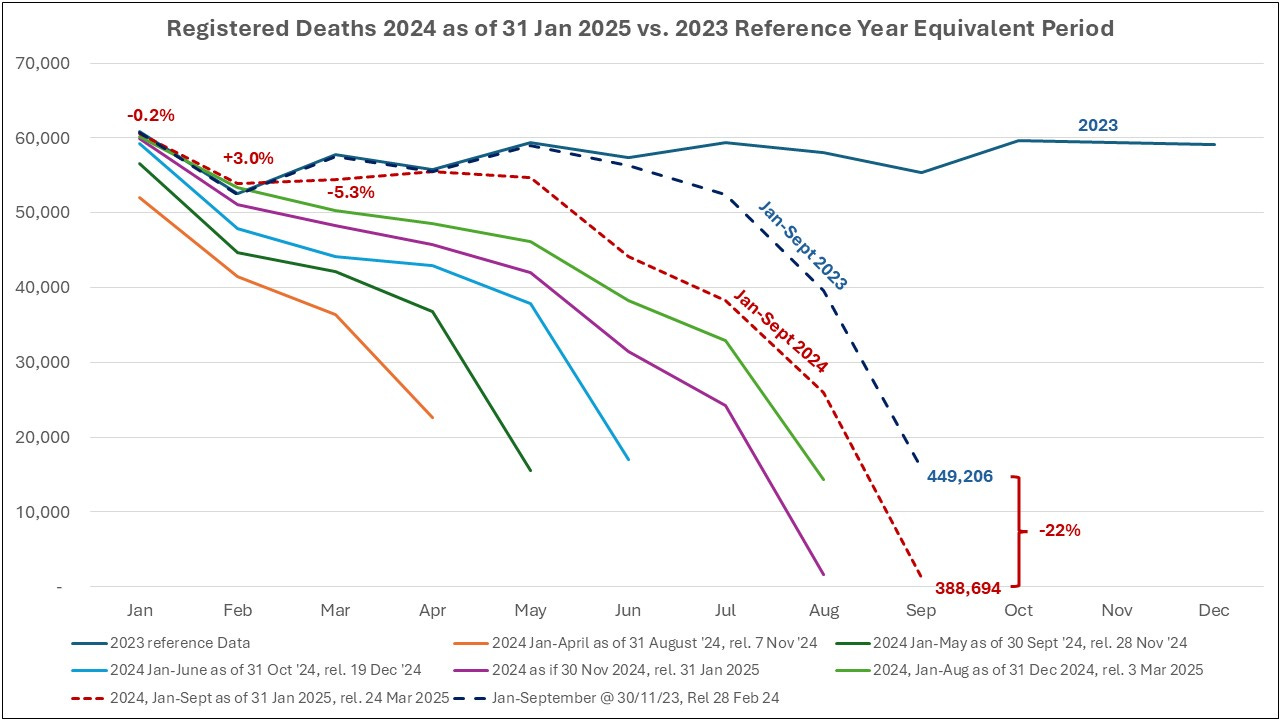
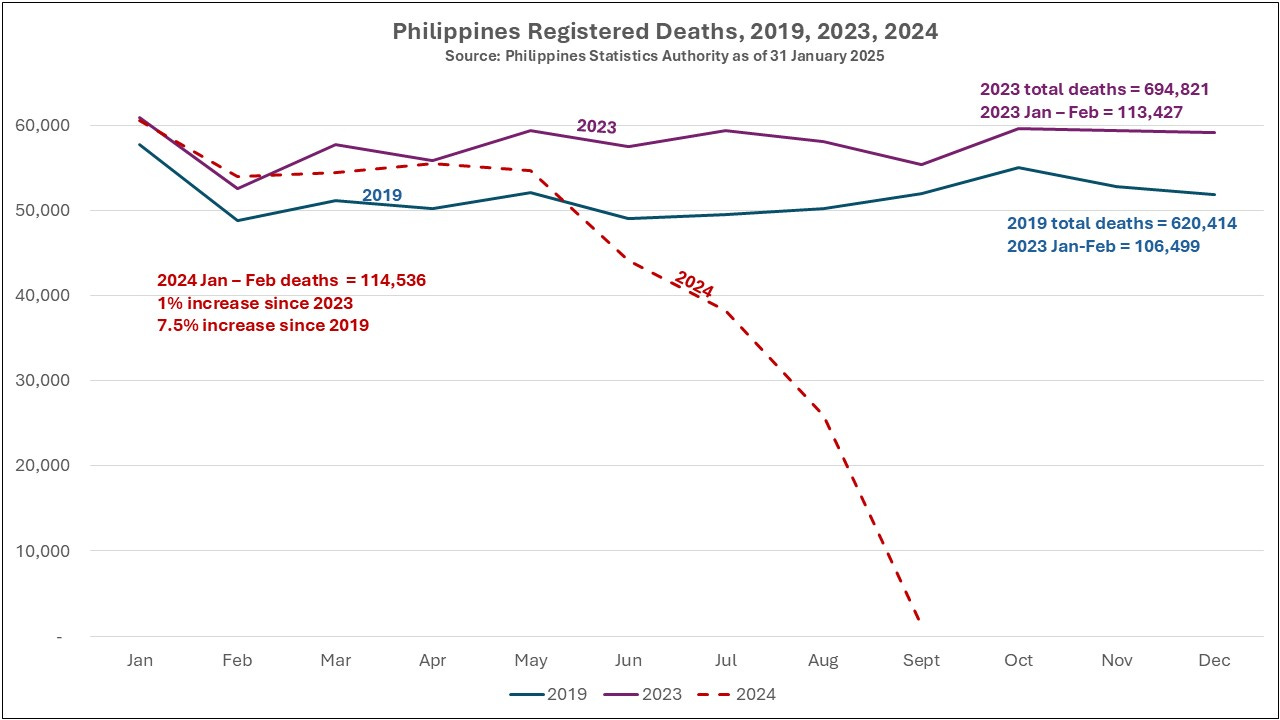
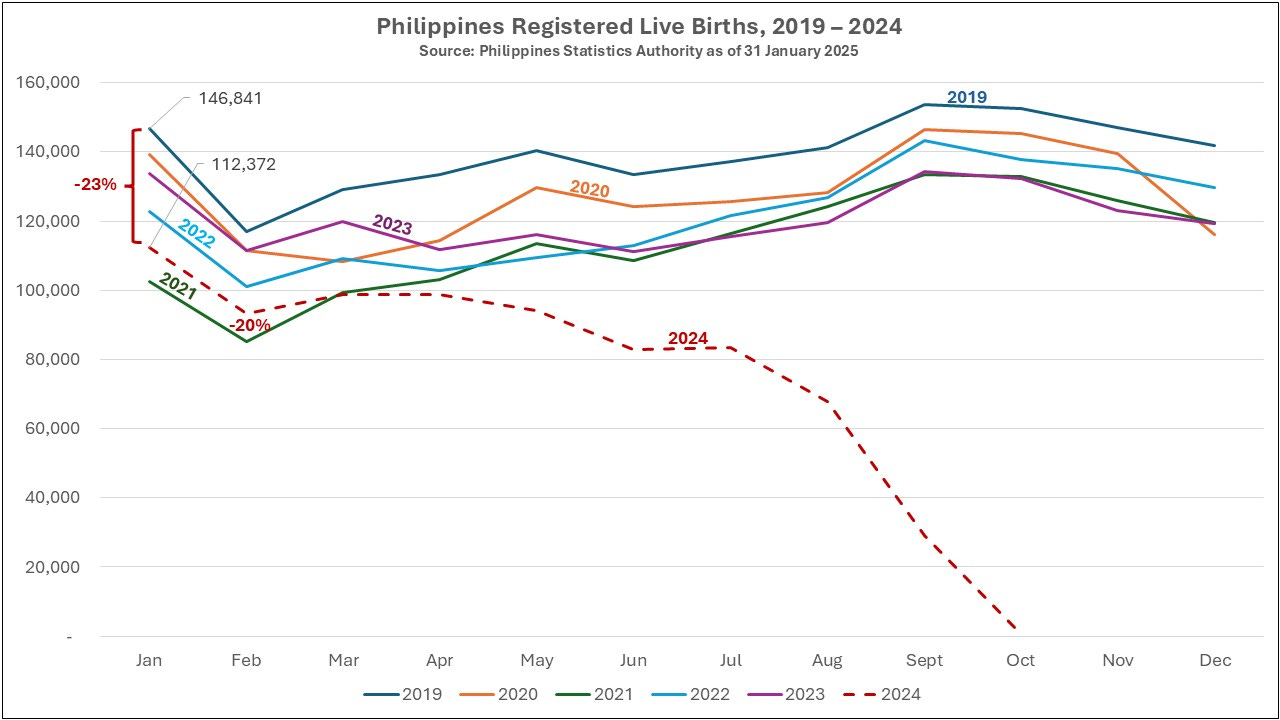


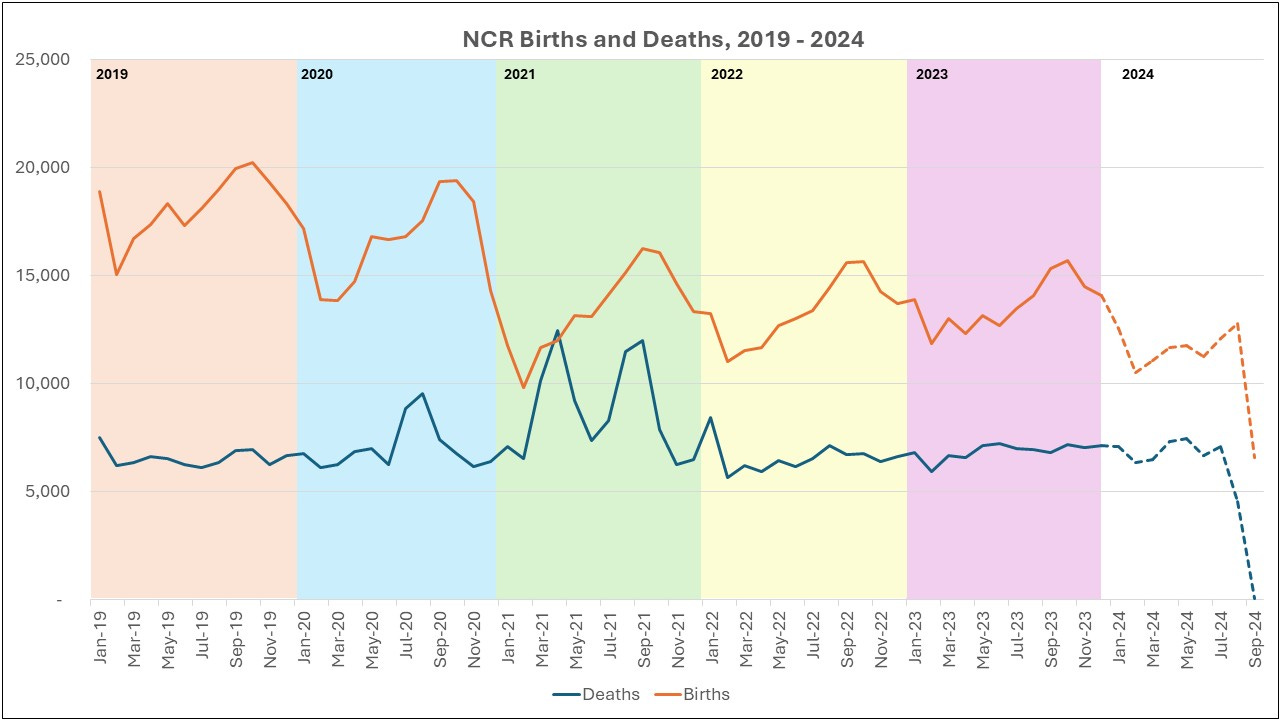
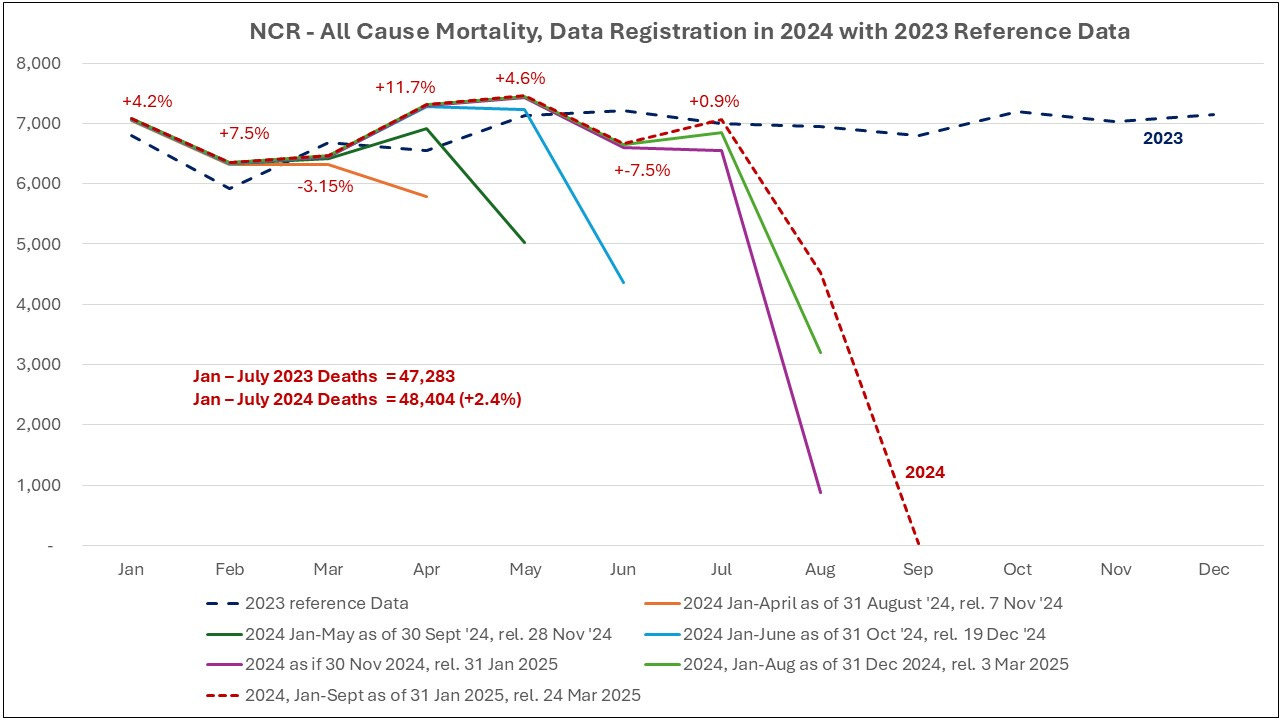
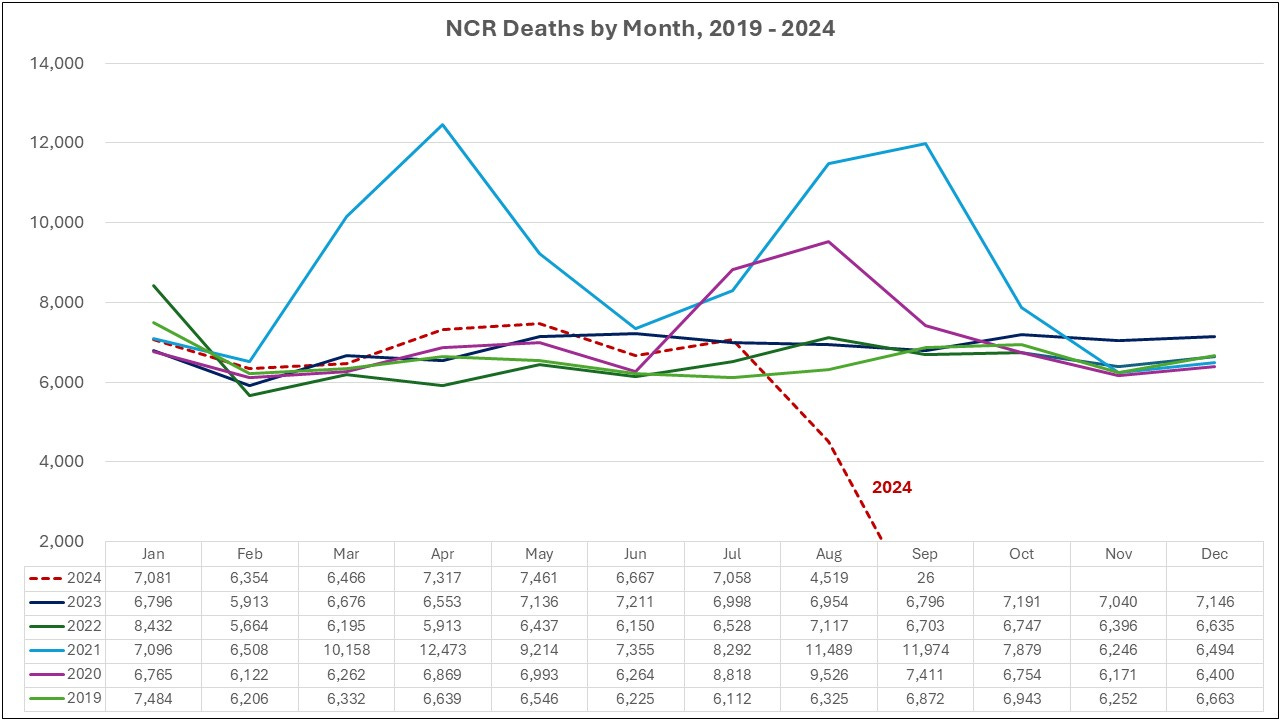
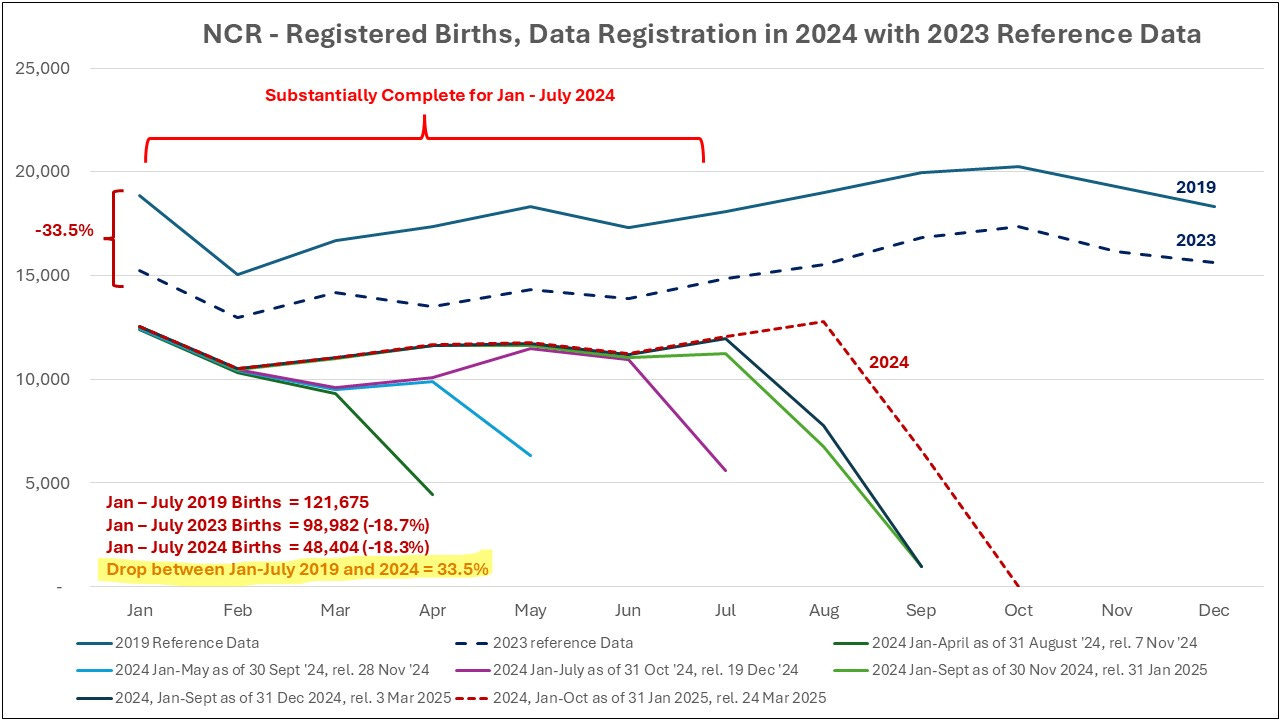

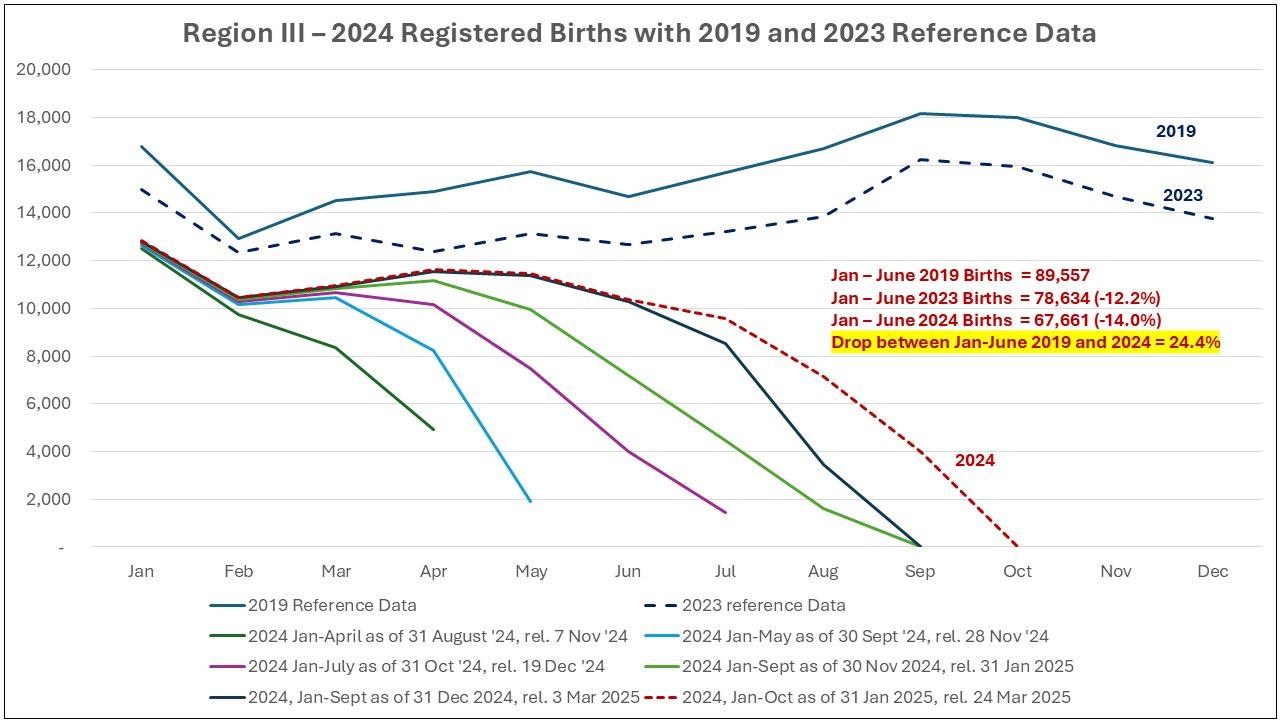

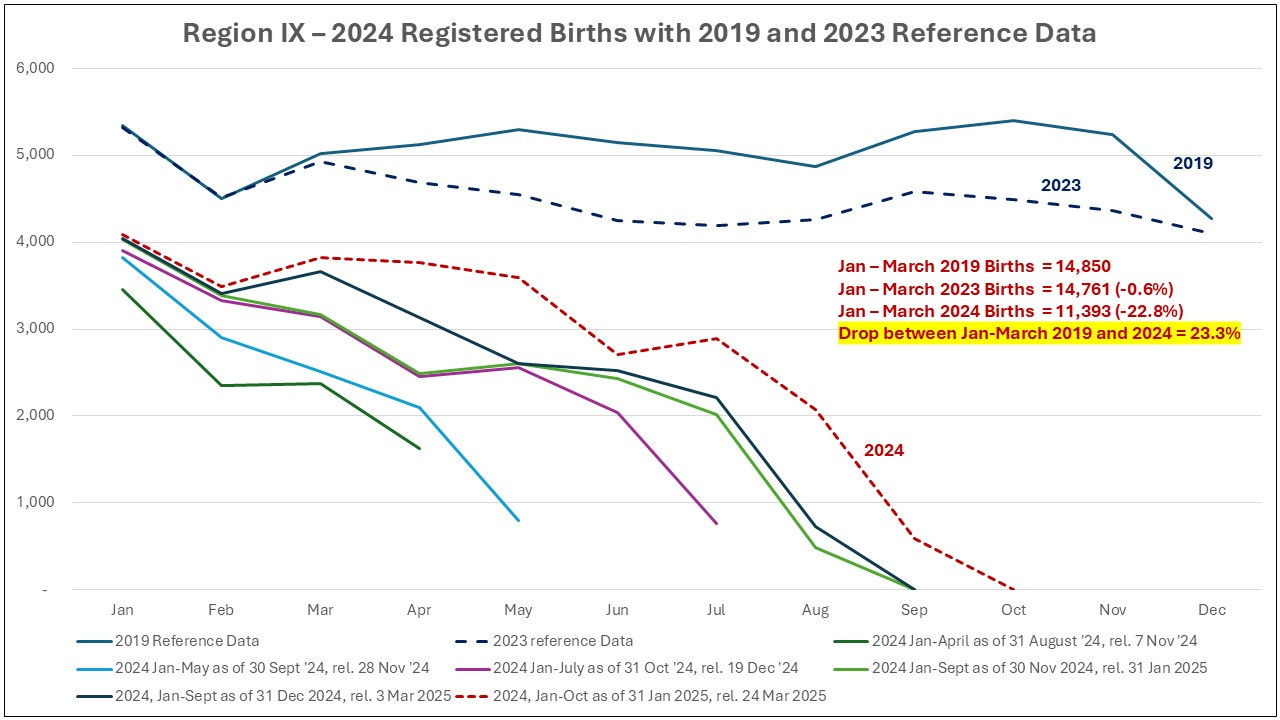

Regarding the percent drop in live births, that figure could be considered double what is expected in a normal unprecedented catastrophe. If you had watched, and probably so, the documentary movie Died Suddenly, US DND whistleblower Lt. Col. Dr. Theresa Long was saying that American mortality and morbidity figures at that time pointed to something already "apocalyptic."
Truly catastrophic demographic trend. Philippines with a 22% drop in births from 2019. Next to Macau, Taiwan and Hong Kong, Taiwan. And so many are still oblivious to the fact and to the cause. You will even be dubbed a conspiracy theorist by the sheeple if you get them to look the way of the Covid bioweapon shots.
Wonder if UP Stat or other colleges in the country see the same findings, or rather, look into the official stats with a clear, unrestrained view?